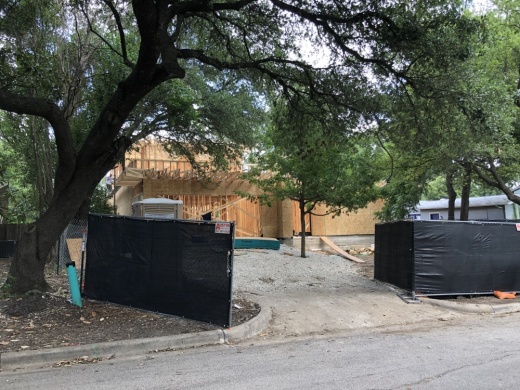Compared to last year, mortgage purchase applications, a key real estate indicator, dropped by 17.8% from July 10 to July 16 and by 28.5% from July 3 to July 9, according to data from the Mortgage Bankers Association.
Real estate experts are trying to determine if the market is normalizing or if it is a blip.
Jim Gaines, a research economist at the Real Estate Center at Texas A&M University, said while the housing market might be slowing, that is because its pace was unsustainable, particularly when compared to the summer of 2020.
“Everybody's having trouble interpreting the housing data,” Gaines said. “You've got to remember that all of the year-over-year comparisons we’re comparing, what we're doing, for example, in June and July of this year compared to June and July of last year, June and July of last year were explosive after the April [and] May fall off, because of the pandemic.”
However, he added month-to-month data could indicate the housing market is returning to normal.
“I think we're beginning to start seeing some of that reversion back to norm, because quite frankly, you can't see sales increasing 25% a year or home prices going up 20% a year,” Gaines said.
Kevin O’Toole, an area lending manager in Central Texas at Bank of America, said seasonality could also play a role in the market cooling. While the housing market is typically most active from April to October, July tends to be slower.
“June is typically more active than July. July, you get vacations, it’s a little bit of a pullback, it's a little bit of a case of pulling away, and then typically see some more activity in August,” O’Toole said.
O’Toole added that comparing prices to last year presents challenges, since the pandemic disrupted typical real estate trends.
“We're in a hot market. Central Texas still remains a pretty hot market overall,” O’Toole said. “I think the pandemic just threw everybody off of their normal routines and timings.”
The lack of housing inventory is partially to blame for the market remaining hot. O’Toole said inventory remains low, in part because prospective sellers don’t know what their next move would be after selling.
“You have to make sure that you are secure in your next step, whatever that is; if it's purchasing another property; if it's renting,” O’Toole said. “If it's renting, the inventory is somewhat depleted there, too.”
The high number of cash purchases might also play a role in the mortgage purchase application decrease.
“The percentage of properties being bought on cash basis now is a lot higher than the ‘long term norm,’” Gaines said. “That hasn’t come back to norm yet.”
Cash purchases are partially a result of people having increased savings following the pandemic, as well as an influx of real estate investment from financial institutions.
Eric Bramlett, owner of Bramlett Residential, said the pandemic threw everything “totally out of whack.”
“Whenever people entered the market again we started telling people, ‘Hey, look, this year is going to be a weird year seasonally,'” Bramlett said. “And then what ended up happening that we really couldn't predict is the demand actually increased. And the demand increased because everybody was stuck at home.”
He added that the dip in mortgage purchase applications will feel like a huge slowdown for buyers and sellers.
“It's going to feel like we fell off a cliff, but we're really just returning to the normal, robust market that Austin has been in for at least the last half decade,” Bramlett said in an email.





